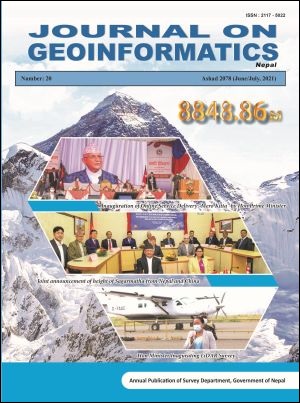Assessing the Accuracy of Remotely Sensed Forest Maps for Nepal
DOI:
https://doi.org/10.3126/njg.v20i1.39473Keywords:
Remotely Sensed Maps, Point Sampling, Accuracy Assessment, Province wise Forest CoverageAbstract
The accuracy assessment is vital to validate the remotely sensed thematic output before being front to the users. The statistical accuracy measures and modeling have been using widely for the accuracy assessment of the remote sensing product. This study uses six open-access land cover products - Land Cover of Nepal 2010, GlobeLand30, Treecover2010, Global PALSAR-2 forest/Non-Forest, Tree Canopy Cover (TCC), and ESACCI Land Cover 2010, to find out the most reliable forest product for Nepal. The forest/non-forest data were extracted from each product. The stratified random sampling was used to create test points and verified ground truth in Google Earth (GE) by visual interpretation. The overall accuracy (OA), producer’s accuracy (PA), user’s accuracy (UA), Kappa statistics, and the Nash-Sutcliffe model efficiency coefficient (NSE) were measured for each forest/non-forest map. The OA and UA were found to be highest by 94%; the Kappa statistics showed an 89% level of agreement and NSE showed 77 % performance level for Nepal Land Cover 2010 which is the highest among six datasets. Whereas ESACCI land Cover 2010 was found to be the least performer - OA and UA are 53% and 66% respectively, Kappa shows a 53% level of agreement and NSE shows 4%.. The ESACCI land Cover 2010 was found to be the highest coverage whereas Tree Canopy Cover (TCC) has the least one for each province. This study gives the methodological insight to compare remotely sensed datasets and help the user in the selection of the most reliable open-source forest map for Nepal.




